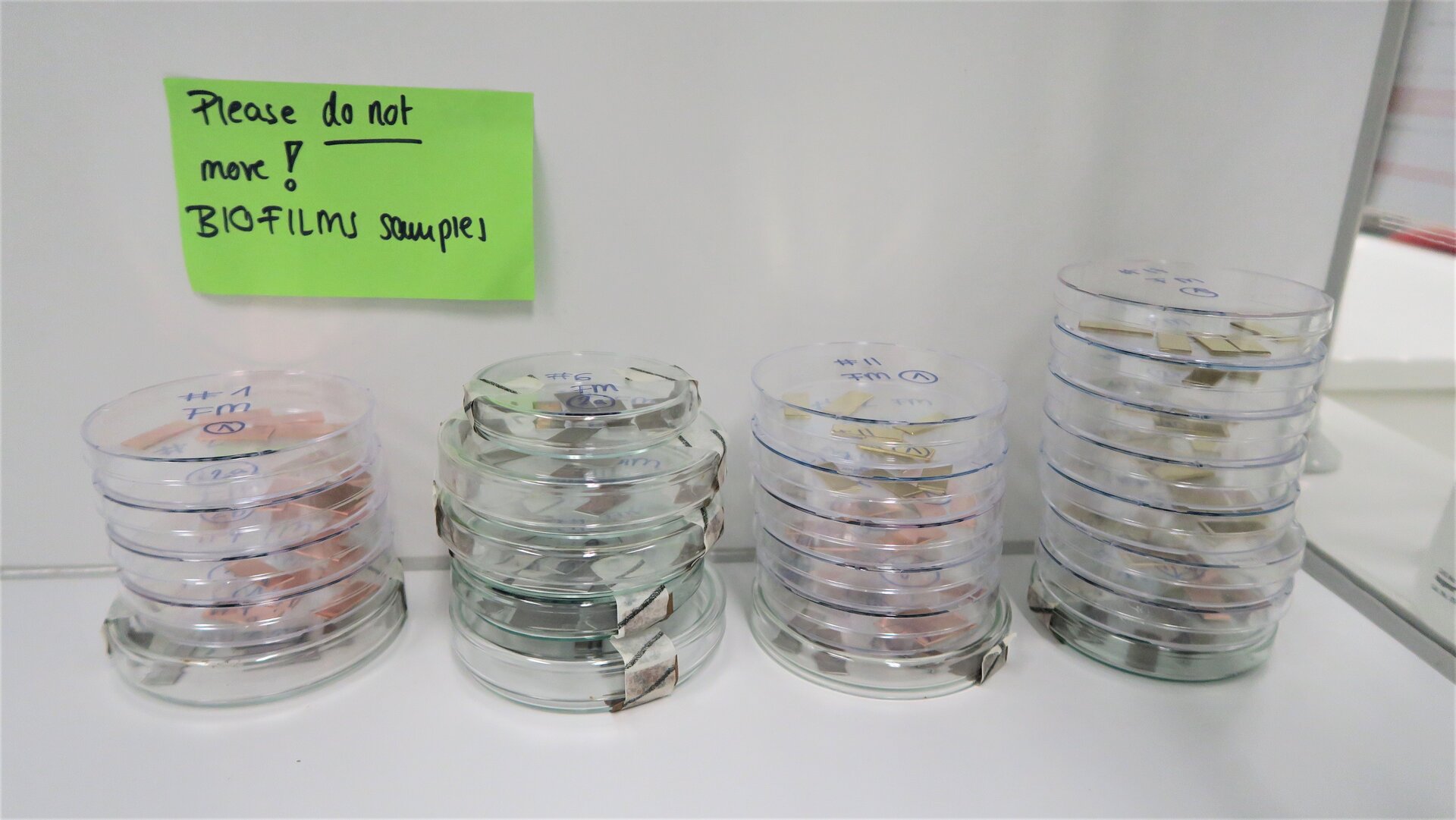Material matters
The Biofilms study continues its cosmic quest to combat bacterial contamination. With three experiments aboard the International Space Station, it's on a mission to improve antimicrobial technology, benefitting astronauts and people on Earth alike.
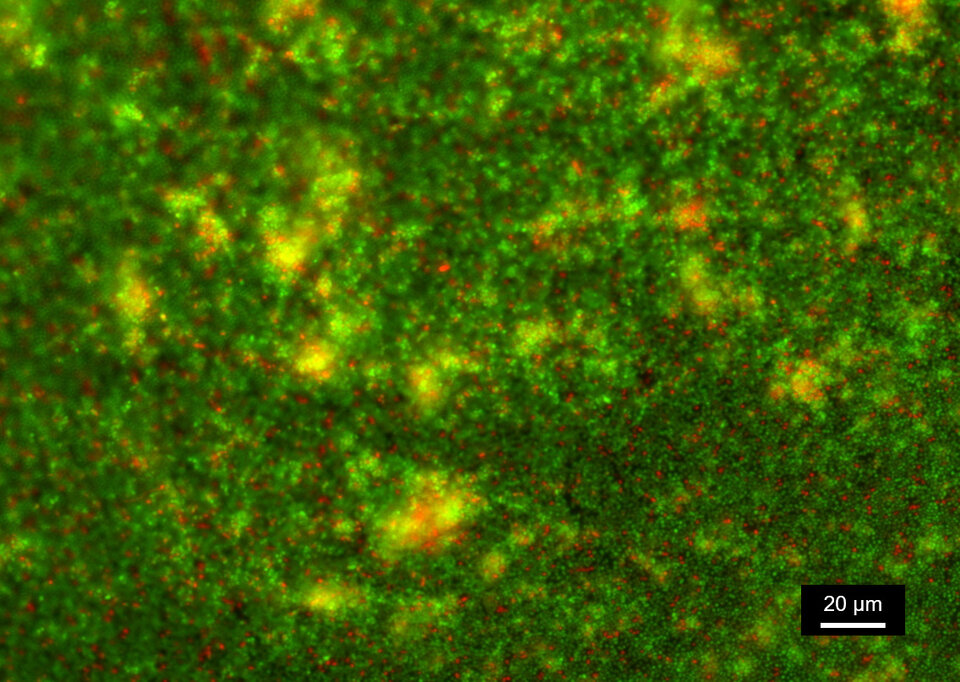
Microorganisms, like bacteria, create protective slime clusters known as biofilms, even in places like the International Space Station. ESA's Biofilms experiment, conducted by researchers from the German Aerospace Center, DLR, and the University of Saarland in Germany, aims to understand how gravity affects these biofilms. The goal is to develop surfaces that can reduce bacterial contamination.
Microbial contamination is a significant concern both on Earth and in space, as uncontrolled microbial growth can lead to health problems. In the confined environment of the Space Station, this can result in respiratory infections, and allergies among astronauts. In addition, microbes can corrode and degrade the Station's critical equipment and systems.
Trifecta
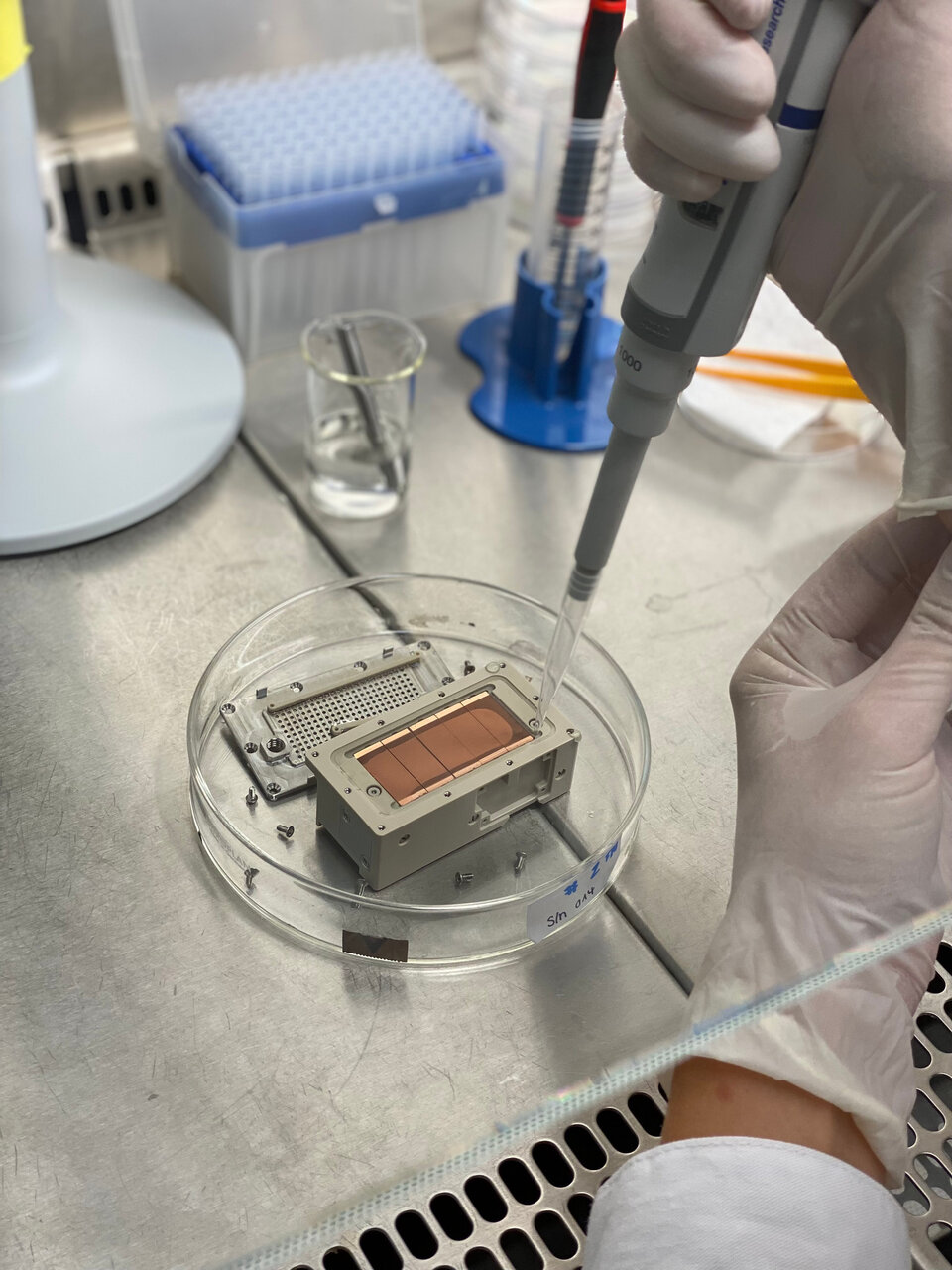
The Biofilms experiment consists of three missions to the International Space Station. Three types of bacteria were tested on metal surfaces, including copper that is known for its ability to naturally combat microorganisms.
Copper ions kill bacteria by disrupting cell membranes, interfering with cellular processes and ultimately causing severe cell damage. Surface modifications such as patterning and germification discourage bacteria from settling even more. Patterning involves creating unique surface textures or designs to make it difficult for microorganisms to stick, while germification promotes the growth of helpful microbes to outcompete harmful ones.
Studying microbial biofilms in space
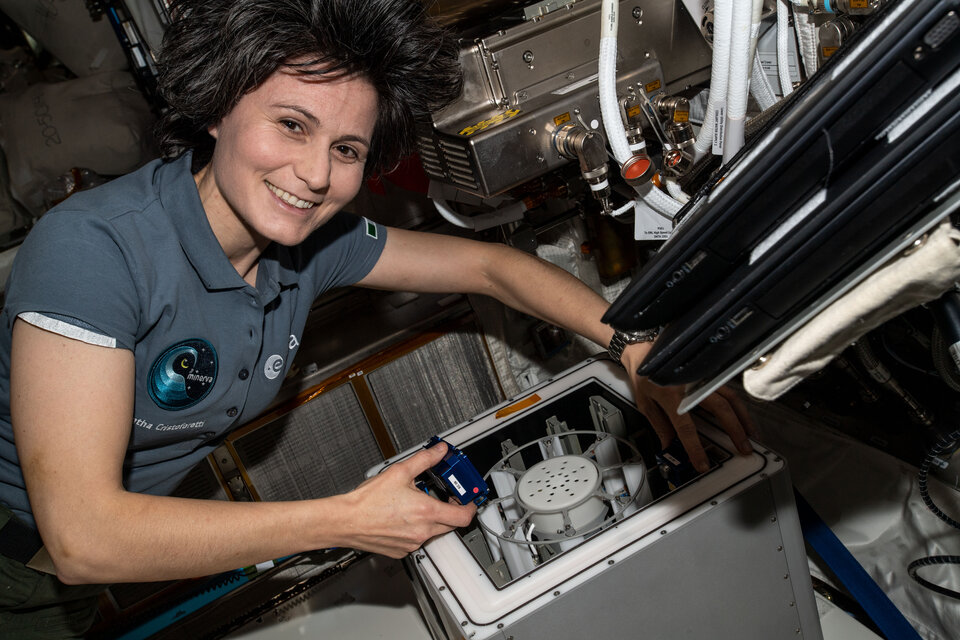
The Biofilms hardware was developed by Kayser Italia for experiments aboard the International Space Station. It is designed to study the formation of biofilms in controlled conditions. It includes special containers with metal plates, bacteria, growth medium, all set up to promote the growth of biofilms while maintaining a suitable research environment.
The design allows for the researchers to start incubation at set times. For the Biofilms experiment, the setup was installed in Kubik, a miniaturised laboratory inside ESA’s Columbus space laboratory.
Final flight
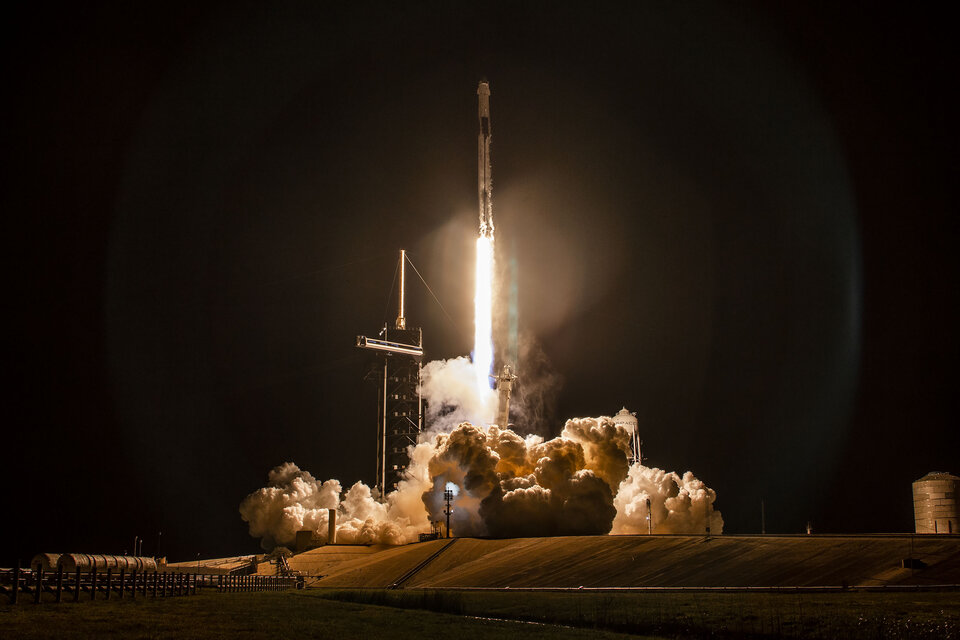
On 15 March 2023, NASA's CRS-27 mission launched from Florida's Kennedy Space Center, carrying the last set of Biofilms samples to the Space Station, following missions in August 2021 and July 2022.
The results from all three missions will provide comprehensive insights into how well these antimicrobial surfaces perform against biofilm formation.
"Crew health and safety on space missions are crucial, and understanding biofilm formation helps reduce bacterial exposure. These findings will assist in selecting materials for future missions," adds Jutta Krause, ESA’s payload engineer for this research.
"Antimicrobial surfaces, like those in our Biofilms experiment, have applications beyond space and are valuable in homes, industries, hospitals, and food production facilities where preventing biofilms is vital."


